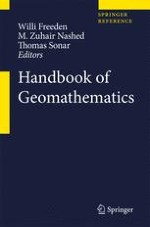2010 | OriginalPaper | Chapter
23. Phosphorus Cycles in Lakes and Rivers: Modeling, Analysis, and Simulation
Authors : Andreas Meister, Joachim Benz
Published in: Handbook of Geomathematics
Publisher: Springer Berlin Heidelberg
Activate our intelligent search to find suitable subject content or patents.
Select sections of text to find matching patents with Artificial Intelligence. powered by
Select sections of text to find additional relevant content using AI-assisted search. powered by
